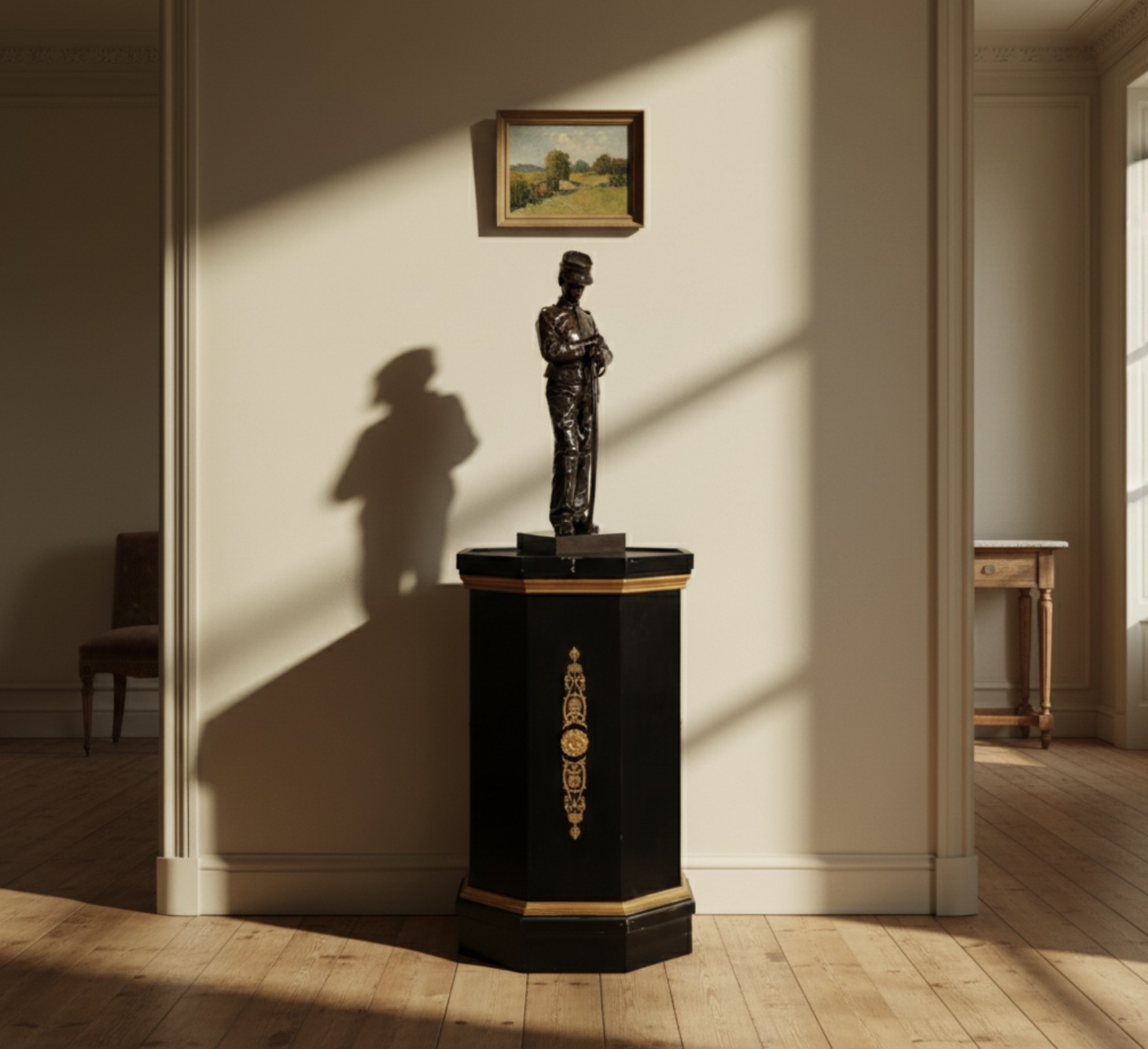EUGÈNE NICOLAS CLÉMENT D'ASTANIÈRES
French, 1841-1918
A Boy Soldier
Patinated bronze, signed in careful script along the edge C. d'Astanieres with artists cypher
Incised "F. Barbedienne Fondeur, Paris" on base edge
Cast early 20th century
24 3/8" H x 6 7/8" D x 7" W
This bronze depicts a youthful conscript in uniform leaning upon a sword much too large for his small body. The detailing of the tunic, trousers, and kepi is carefully modeled with extraordinary texture and nuance. The incised numeral "3" on the cap and as well as either side of his collar suggest the regiment he was assigned to. It is a weighty model with a heavy underlying tension in the subject between the freedom of boyhood and national responsibility of military obligation - it was an image resonant in France following the Franco-Prussian War of 1870–71, when the trauma of rapid mobilization and the drafting of the young left lasting sorrow and a strong impression on the resulting culture.
The model was cast by the foundry of Ferdinand Barbedienne in Paris during the first decade of the twentieth century. It exhibits an unusually fine surface patination with a translucent reddish-oxide under brown and black, the result being a nuanced gem-like surface that positively glows under changing light.
The sculptor, Eugène Nicolas Clément d’Astanières, was himself a decorated soldier before turning to art. Born in Paris in 1841 into a family with strong military traditions, he served with distinction in the 2nd Hussars and took part in the disastrous 1864 Mexican expedition. During the Franco-Prussian War of 1870 he was severely wounded and taken prisoner at Gravelotte. His convalescence and eventual resignation from the army in 1875 marked a decisive shift toward a career in the arts.
He studied sculpture under Georges Clère and later became a student of Jean-Alexandre-Joseph Falguière, exhibiting regularly at the Salon from the 1870s onward. D’Astanières achieved critical recognition, winning a gold medal at the Salon of 1882 for Le Jongleur and later a Medal of Honor at the Exposition Universelle of 1900. His oeuvre frequently drew upon themes of military life, allegory, and genre subjects, reflecting both his personal experience and the broader preoccupation of fin-de-siècle France with memory and service. He passed away in Capbreton in 1918.
Curator’s Note:
The present figure exemplifies d’Astanières’ ability to merge personal biography with broader national sentiment. The soldier’s downcast introspective gaze and understated stance are devoid of overt heroics, suggesting instead a quiet meditation on duty and sacrifice. This departure from grandiose martial monuments aligns with a wider late 19th-century French sculptural tendency to humanize military themes, giving us a sense of his intimate reflections on the cost of war instead of celebrating triumphalist national narratives. There is an echo of the sentiment in the Departure of the Conscript by Julien Le Blant, a painting we currently still have in our inventory that you can view by searching our current holdings - fittingly, we have both displayed together in the gallery for a sense of context on the lament of lost childhood and the shared grief not only by the soldier but by those who love and fear for him.
Note: the pedestal shown together with the sculpture is presently available as of this writing and can be viewed here: . Gallery image and image of the sculpture together with the pedestal are generated images for a sense of perspective only.
Condition: Very fine overall patina with light rubbing to high points, including his shoulder blades and edges of his jacket at the waist verso. Carefully cleaned and sealed in conservator's wax; ready to place.
ref. 508VJB14Q

